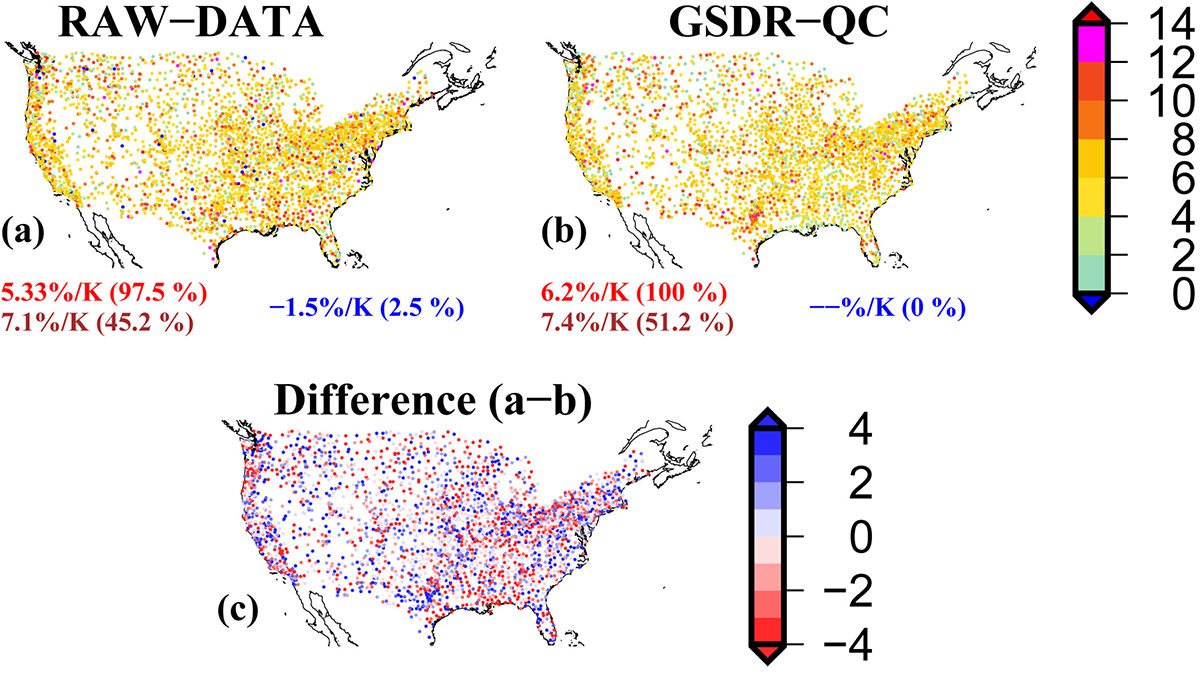Editors’ Highlights are summaries of recent papers by AGU’s journal editors.
Source: Geophysical Research Letters
Precipitation response to the human-caused increase in greenhouse gases is more complicated than temperature response. A warmer atmosphere can hold more moisture, but moisture content is only one ingredient in precipitation. The other ingredient is the ascending motions that cause the moisture to condense and fall. The geographical variation in humidity — think ocean versus land — and in wind patterns, which in the jargon of atmospheric sciences are referred to respectively as thermodynamic and dynamical factors, provide ample lines of argument to expect and explain variation in this response.
In contrast, Ali et al. [2022] demonstrate that once differences in data and in methods are taken into account, estimations of precipitation scaling with temperature — the proportional increase of precipitation with warming — converge to the theoretical expectation of 7% per degree of warming. This is an important confirmation of the theory of climate change. It is also a conclusion of practical consequence, given the potential for damage from heavy rains and flooding.
Citation: Ali, H., Fowler, H. J., Pritchard, D., Lenderink, G., Blenkinsop, S., & Lewis, E. (2022). Towards quantifying the uncertainty in estimating observed scaling rates. Geophysical Research Letters, 49, e2022GL099138. https://doi.org/10.1029/2022GL099138
—Alessandra Giannini, Editor, Geophysical Research Letters

